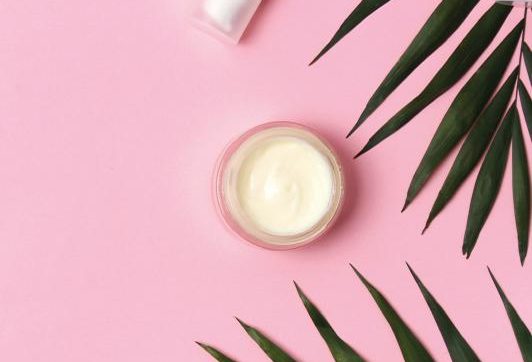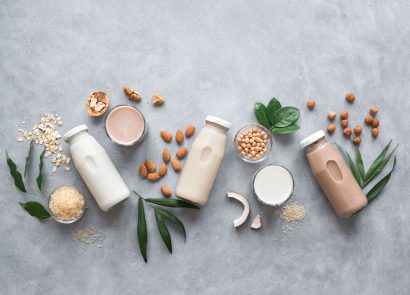Looking younger is a goal for many of us but it can be confusing to know what you should be using on your skin. If you are feeling overwhelmed by the huge amount of antiageing products on the market, don’t panic. We asked Bianca Estelle, skin specialist, medical aesthetician and founder of bea Skin Care (bea-skincare.com), for her top youth-boosting ingredients to look out for when you’re scanning the aisles. Now, you can be confident in achieving the results you want when parting with your cash, rather than just grabbing whatever jar’s nearest to you and hoping for the best!
Retinol (Vitamin A)
A great anti-ageing ingredient, but more sensitive skin types should use a lower strength variety
“The ultimate ingredient for skin-resurfacing, retinol stimulates the production of new skin cells, revealing younger looking skin,” says Bianca. “For this reason, it’s often the go-to product for those wanting to target signs of ageing, including dark spots, fine lines and wrinkles. Sometimes referred to as vitamin A, retinol can also be useful for acne as it encourages skin renewal. It’s good teamed with daytime use of AHAs (Alpha Hydroxy Acids) because it works at a cellular level, whereas AHAs work at the very top of the skin. While it’s OK to use this ingredient during the day, I would suggest that any retinol products containing over one percent retinol (such as bea Skin Care 2% Retinol Serum, £54) be used in the evenings, for safer use – retinol is very effective for skin cell renewal so fresh skin may be more sensitive to the sun, which is why it’s safer to use before bedtime, during which you won’t expose your skin to the elements.”
Salicylic acid
This is a good anti-ageing option for those with rosacea, redness or acne
“Ideal for acne, salicylic acid absorbs oil and has antibacterial properties, plus it dissolves the skin debris that clogs pores and causes spots to form,” explains Bianca. “This makes it a great ingredient for spot treatments and products that are specifically designed for problem areas. Not a lot of people realise that salicylic acid is also good for redness and rosacea, as it’s antiinflammatory and, as well as working well as a localised product, in these instances it can be used all over the face. Rosacea sufferers or those with acne-rosacea are not able to use many chemical peels, so salicylic acid is a good alternative to a peel for them. This will also help to reveal newer skin, resulting in a more youthful appearance.”
Hyaluronic acid
Hyaluronic acid is a good anti-ageing option for oily skin and is best teamed with vitamin C
“Hyaluronic acid is a water-based hydrator that can hold 1,000 time its own weight in water,” says Bianca. “This makes it the perfect ingredient for combatting dryness as it allows the skin to retain moisture without becoming too oily. Hyaluronic acid and vitamin C work well together and can be applied both morning and night. Particularly good for plumping the skin and hydrating, this is a good option for those with oily skin as it’s oil-free. Pairing hyaluronic acid with vitamin C will further benefit those with this skin type, due to the antibacterial properties that vitamin C offers.”
Glycolic acid
This is for oily skin types and those with dull skin
“Another great ingredient for use when targeting the signs of ageing, glycolic acid helps to lift away dead skin cells, revealing fresher skin,” Bianca explains. “Its small molecule size also lends itself well to clearing pores, which makes it a good option for those struggling with spots, although it works for all skin types as well. It’s great for rebalancing oily skin and can be used morning and night. In addition, this active ingredient is a good option for anyone with dull skin seeking revitalisation as it helps encourage cell renewal.”
Vitamin C
This is the ultimate all-rounder
“One of my favourite ingredients within skincare, vitamin C is a powerful antioxidant which encourages collagen production, often synonymous with youthful skin,” says Bianca. “In addition, vitamin C has antibacterial and antiinflammatory properties which can help ease acne and inflamed skin. Antioxidants, such as vitamin C, are great for the prevention of free radical damage and for skin brightening, so prove an ideal option for those seeking anti-ageing formulas. In my opinion, vitamin C should be part of everyone’s regime as it’s so versatile – it suits all ages as well as every type of skin. Paired with hyaluronic acid, it can also help to hydrate and plump skin.”
Kojic acid
For post-inflammatory pigmentation and sun-damaged skin
“Derived from a species of Japanese fungi, kojic acid acts as a tyrosine suppressant, which prevents melanin production,” says Bianca. “This means it’s often used in brightening products and for treating sun damage and hyperpigmentation. Kojic acid also works very effectively alongside enzymes such as papaya and other AHAs, including the likes of glycolic acid. This is because it helps to boost the exfoliation process. Kojic acid has a larger molecule size than glycolic acid and works well to treat post-inflammatory pigmentation (redness and discolouration from spots).”
Lactic acid
For sensitive skin types
“Similar to glycolic acid, lactic acid has a larger molecule size so is a good resurfacing (and antiageing) ingredient for sensitive skin types or those with dry skin. It works in much the same way as glycolic acid, but the larger molecule size penetrates the skin at a slower rate which is less aggressive to the skin. It can be used with a low-strength retinol product, AHAs and papaya, and will help benefit those with mild acne.”






















